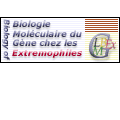
|
|















|
International Summer School
From Genome to Life:
Structural, Functional and Evolutionary approaches
WESTHOF Eric |
|
Institut de Biologie Moléculaire et Cellulaire, UPR9002, CNRS, Université Louis Pasteur, 15 rue René Descartes, F-67084 Strasbourg Cedex, France title: Structural bioinformatics of structured RNAs RNA molecules are highly negatively charged polymers, the only ones known to date able to both code genetic information and to perform chemical catalysis. Electrostatics is central for folding, binding, and catalysis of RNA molecules. Experimental and theoretical studies have revealed the hierarchical folding of ribozymes. The pairings of the secondary structure join first proximate regions in sequence, followed by parallel packing or end-to-end stacking of contiguous helices. Those preformed helical domains associate into bundles of helices to constitute the compact tertiary structure maintained via interactions between tertiary architectural motifs. Thereby, RNA molecules exhibit complex structures in which a large fraction of the bases engage in non-Watson-Crick basepairing, forming motifs that mediate long-range RNA-RNA interactions and create binding sites for proteins and small molecule ligands. The rapidly growing number of three-dimensional RNA structures at atomic resolution requires that databases contain the annotation of such basepairs. An unambiguous and descriptive nomenclature will be described in which RNA basepairs are classified by the base edges participating in the interaction (Watson-Crick, Hoogsteen/CH, or Sugar edge) and the orientation of the glycosidic bonds relative to the H-bonds (cis or trans). Twelve basic geometric families can be identified and all twelve have been observed in crystal structures. For each basepairing family, one can deduce the 4x4 "Isostericity Matrices" summarizing the geometric relationships between the 16 pairwise combinations of the four standard bases, A, C, G, and U. This format makes apparent the recurrent geometric patterns that are observed and helps identify isosteric pairs that covary or interchange in sequences of homologous molecules while maintaining conserved 3D motifs. This tool is therefore crucial to the generation of accurate structural alignments of homologous RNA sequences. LEONTIS, N. & WESTHOF, E. Geometric nomenclature and classification of RNA basepairs RNA 7:499-512 (2001). |